 Worm-eating Warblers are one of my favorite warbler species. Although the song of the WEWA is not nearly as melodic as many warbler species, it is exciting to hear it from the densest areas of forested hillsides where this species breeds. I found this individual who was singing and searching for food in an area where this species bred last year.
Worm-eating Warblers are one of my favorite warbler species. Although the song of the WEWA is not nearly as melodic as many warbler species, it is exciting to hear it from the densest areas of forested hillsides where this species breeds. I found this individual who was singing and searching for food in an area where this species bred last year.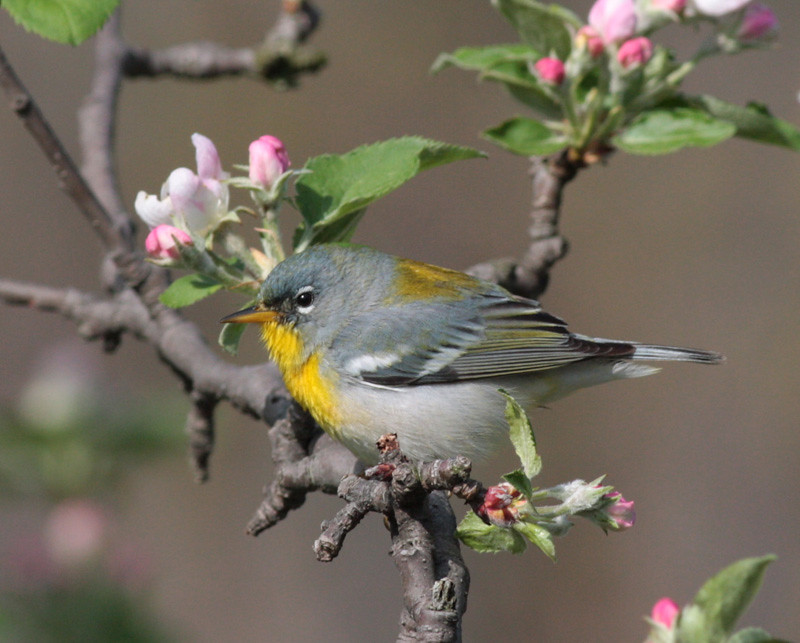
Northern Parulas do not breed in the areas around my house, but they are common migrants in the spring and fall. This gorgeous bird stopped to feed in the apple tree next to the house.
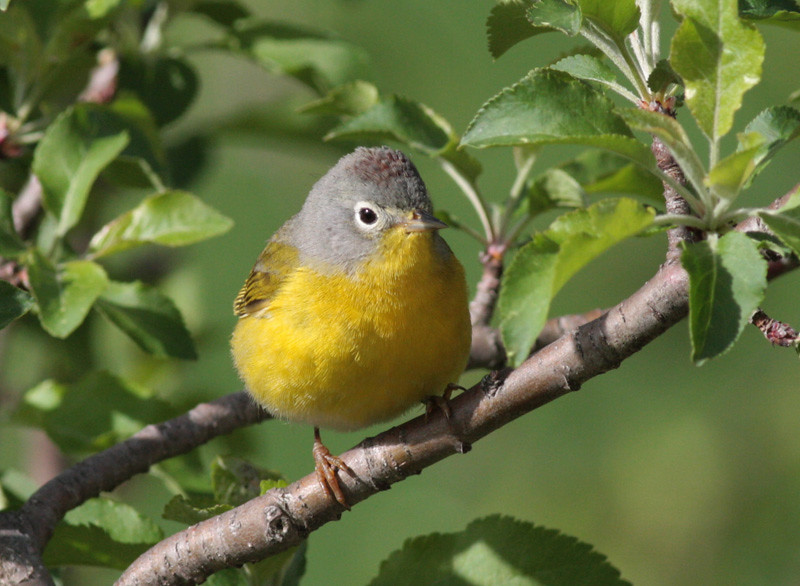
In the same tree as the parula above, this Nashville Warbler also stopped by to feed on the plentiful insects that visit the apple blossums. This species is never common in this area, but I have seen or heard several of them in the past few days. Note the red on top of the bird's head, a characteristic rarely seen in the field.
Warblers are not the only birds migrating! I spotted these, and several other, Wood Ducks flying overhead.
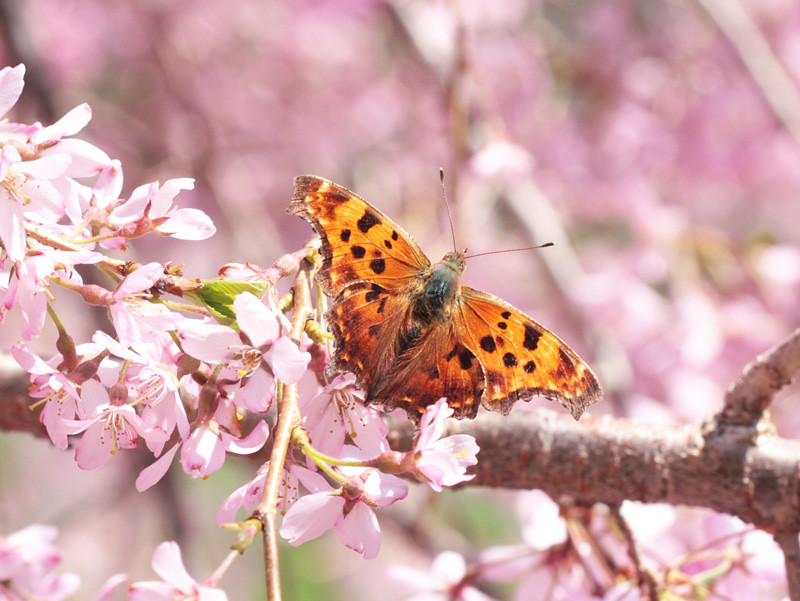
This Eastern Comma stopped for a sip of nectar on an ornamental cherry tree. This species, and the similar Question Mark, are common springtime butterflies of forests. Eastern Comma seems to prefer upland woodlands and the Question Mark inhabits creek and river edges.
 I found this Eastern Pine Elfin on its foodplant, Pitch Pine. This species only appears for a short time in spring and is a treat to find. Pine elfins are most commonly found in upland barrens with pines.
I found this Eastern Pine Elfin on its foodplant, Pitch Pine. This species only appears for a short time in spring and is a treat to find. Pine elfins are most commonly found in upland barrens with pines.
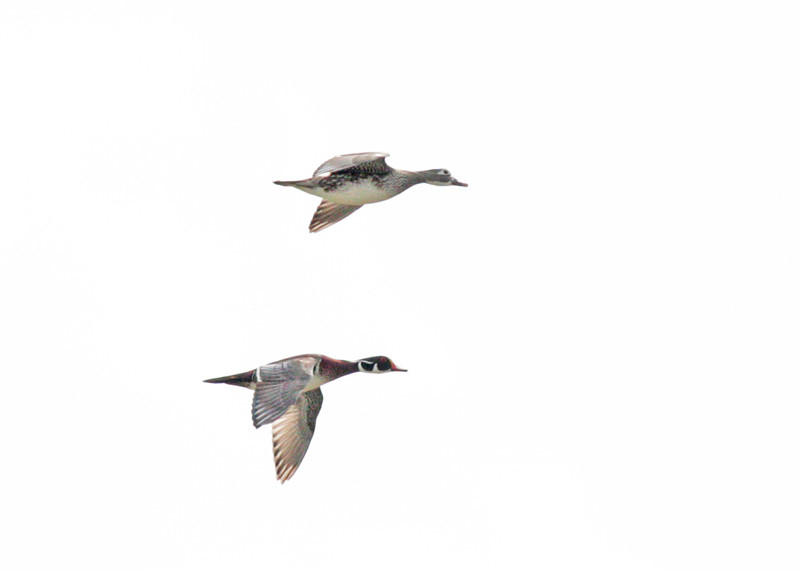
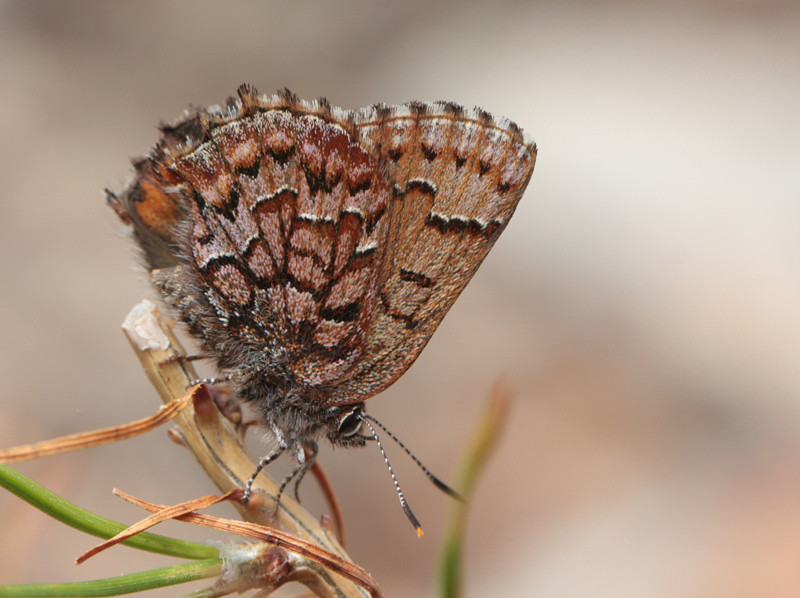
No comments:
Post a Comment